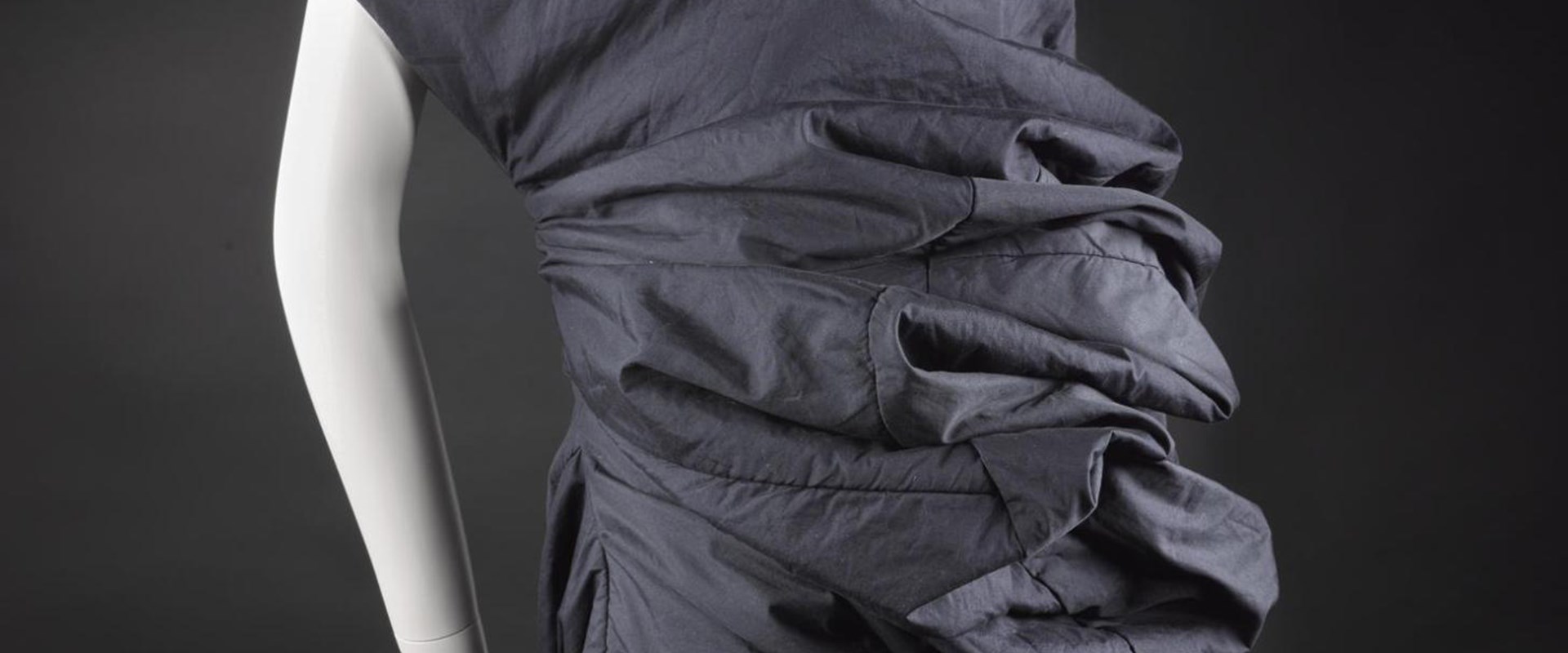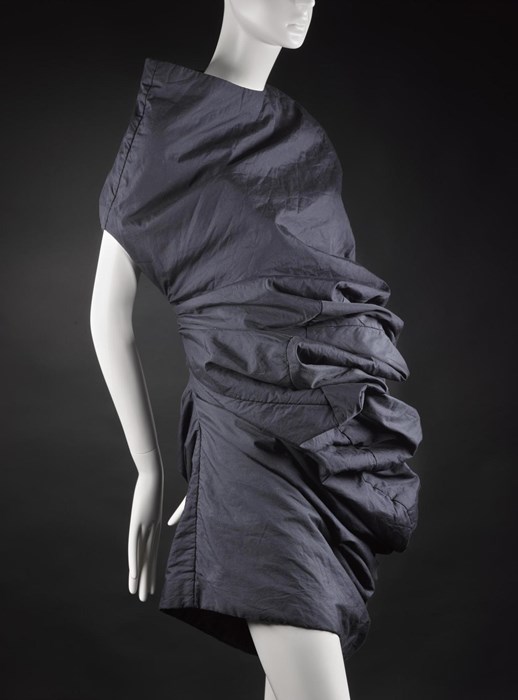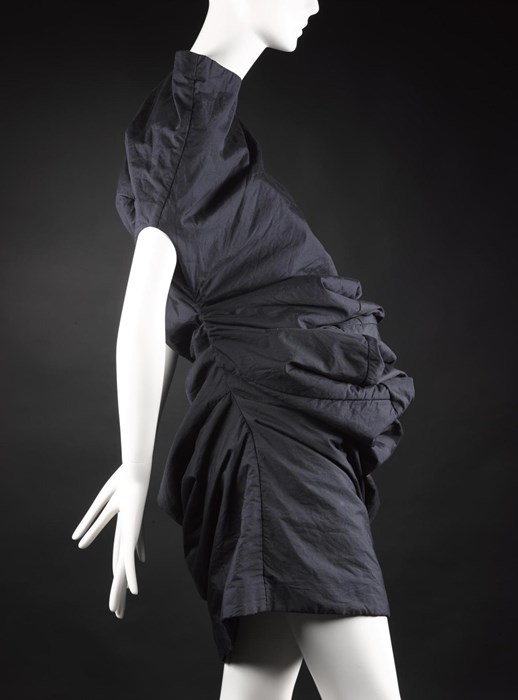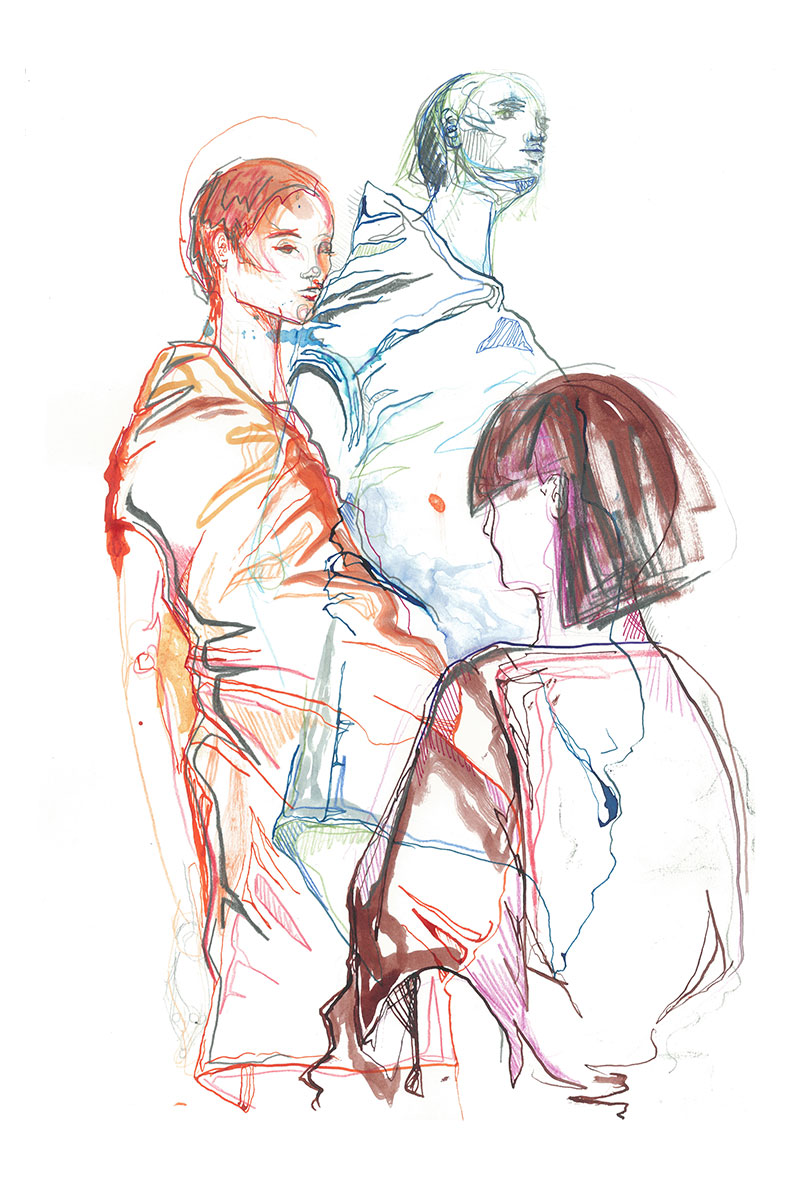Key in a search term below to search our website.
Key in a search term below to search our website.

This iconic dress by Rei Kawakubo subverts traditional ideals about how women should look.
Date
Spring/Summer 1997
Designed by
Rei Kawakubo (b.1942), Comme des Garçons, Tokyo, Japan
Made from
Blue/black polyester and cotton, padded with tulle
Museum reference
On display
Fashion and Style, Level 1, National Museum of Scotland
Did you know?
You can find out more about Rei Kawakubo's 'Bump' dress with Mode, the online guide to our Fashion and Style gallery.
“I didn’t expect them to be easy garments to be worn everyday, but Comme des Garçons clothes should always be new to the world and inspiring. It is more important, I think, to translate thought into action rather than to worry about if one’s clothes are worn in the end.- Rei Kawakubo
Rei Kawakubo of Comme des Garçons helped to pioneer a 1990s avant-garde aesthetic which scorned the visual language of the hyper-sexualised, body-conscious fashions of the previous decade. Her designs challenge western modern traditions where the garment follows the line of the body, instead drawing on traditional Japanese ideas which treat the relationship between the body and the textile very differently.


Above: Dress from 'Body Meets Dress' or 'Bump' collection, of blue/black polyester and cotton, padded with tulle, designed by Rei Kawakubo for Comme des Garçons, Spring/Summer 1997. © Rei Kawakubo / Comme des Garcons.
Kawakubo’s now iconic Spring/Summer 1997 'Body Meets Dress' or 'Bump' collection parodied the cultural tropes of female body image. This sample garment for this landmark collection plays with the space between the fabric and the contours of the body, critiquing the notion of there being one ideal shape and encapsulating Kawakubo’s concept that ‘The body becomes dress, dress becomes body.’
The collection made use of 1980s padding but subverted its original intention. Sending unfamiliar shapes down the catwalk, constructed with kidney-shaped down pillows sewn into slip linings, Kawakubo offered an ‘ironic commentary on expectations of women and cleavage-enhancing bras, to a reimagining of the maternal figure and exaggeration of the protruding curves of the female anatomy.’ (AnOther magazine, January 2016)
Laid flat, this dress forms a horseshoe shape, with the head and armholes placed at seemingly illogical distances from one another. Inside it is lightly padded and reinforced with tulle to support the curves, and can be worn in a variety of ways.
This overview of the Met's 2017 exhibition celebrating Kawakubo's work shows more of the 'Bump' collection, as well as providing a fascinating introduction to the designer's work.
When National Museums Scotland invited students from the Fashion BA (Hons) programme at Edinburgh College of Art to create fashion illustrations of garments in our Fashion and Style gallery, Farquharson's ensemble provided rich inspiration. This illustration by Delores Zhou was one of three winning images from the project.

Above: Katie Griffith Morgan, response to a dress from the ‘Body Meets Dress’ or ‘Bump’ collection, designed by Rei Kawakubo for Comme des Garçons, Spring/Summer 1997.